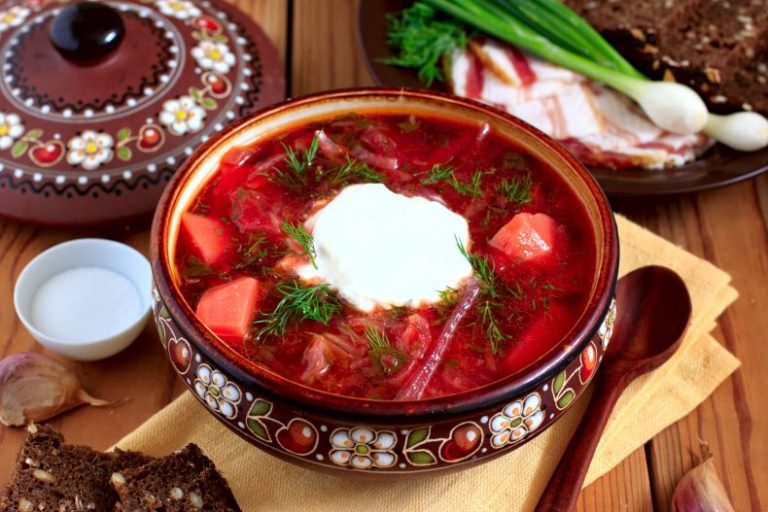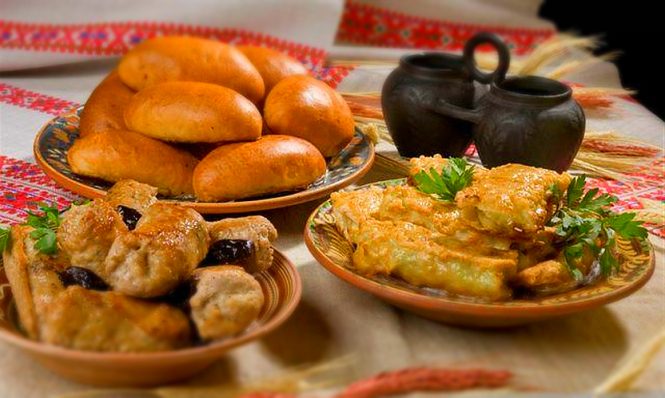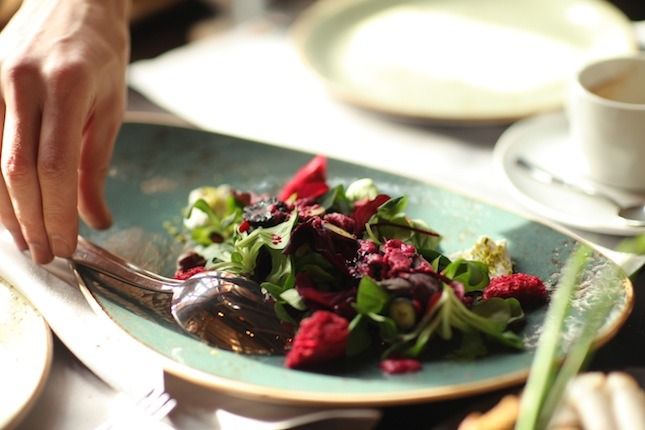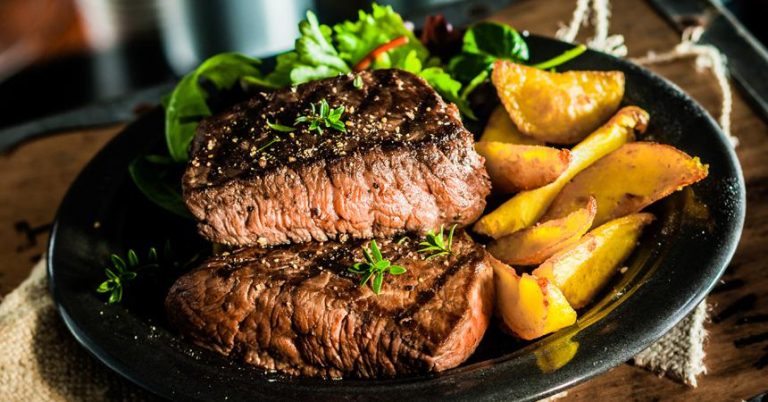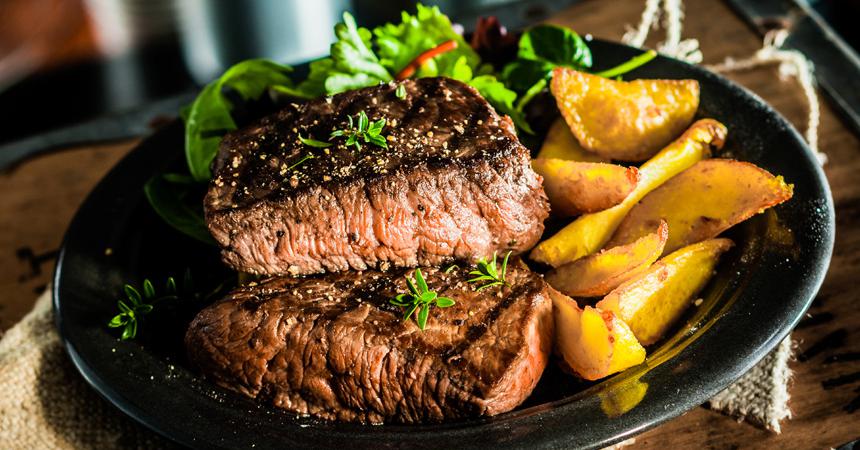Chinese cuisine has existed for more than three thousand years, as evidenced by the finds of archaeologists who have unearthed bronze plates, kitchen boards, pots and knives dating back to 770-221. BC. One and a half thousand years ago, the first Chinese cookbook was compiled; since antiquity, there have been many “restaurants” and tea houses in the Middle Kingdom. Cooking was considered an art in China, and cooking was always taken very seriously.
In the traditional requirements for chefs, there are points that food should be not only tasty, but also healthy, and even medicinal. Hence the spread of herbs in Chinese cuisine, which often has medicinal properties. In ancient Chinese cuisine, much attention was paid to the concepts of yin and yang. All foods and dishes were divided into those that give energy, and those that soothe. For example, meat is a pure yang product; water carries yin energy. To maintain health and longevity, you need to build your diet so that yin and yang are in harmony.

The Chinese love to eat together. A holiday, business negotiations, a family dinner, or just a meeting with friends are an excuse to enjoy delicious dishes. The theme of food is reflected in a large number of fixed expressions or sayings. For example, “eating vinegar” means feeling envy or jealousy, and “eating another’s tofu” means fooling, “eating ice cream with your eyes” means looking at a member of the opposite sex.
The Chinese eat slowly, little by little, enjoying the taste. Eating quickly speaks of disrespect for the owner and for the food itself. As a sign of respect and special care, it is customary to put a treat with your chopsticks in the guest’s bowl. In China, there is no concept of “having a bite” – it is believed that food is sent to people from heaven, so every meal is an event. There should be balance in the dishes on the table, but with a predominance of liquid and soft media, which are considered the most useful and easily digestible. For large holiday dinners, up to 40 dishes are served. Green tea is usually drunk before dinner, then cold snacks are served: fish, meat, liver, or vegetables. Then each guest receives a bowl of rice, common dishes and sauces are placed in the center of the table. Warmed wine or matan is served with food. After the meal, the broth is served and again green tea. This order of dishes is very good for digestion, guests get up from the table with ease, they are cheerful and happy.
A very important element of the Chinese table is its appearance, the order of the dishes, and their color combinations. Table setting is usually kept in white and blue tones, bright colors or contrasting combinations are undesirable. Dishes are decorated with herbs, vegetables, fruits or some of their parts are skillfully cut in the form of chrysanthemum flowers, spikelets of wheat or bizarre animals.
Wok – Chinese cuisine, cooking Chinese cuisine is primarily the art of a chef. The variety of dishes and their special flavors are achieved through various methods of processing food and mixing them. There are several basic principles that Chinese chefs have followed for centuries. First and foremost, the components of the dish must be crushed. They break, tear or cut. The tradition of grinding all raw components allows not only to preserve the maximum amount of nutrients, but also to save fuel by reducing the cooking time. China was densely populated for a long time, the tree was highly valued, and the peasants had to save fuel. It is precisely because of the need to save firewood that a convex wok pan appeared, in which food, chopped into small pieces, heats up very quickly. By placing several bamboo baskets in the wok, you can steam several dishes at the same time.

By the way, the custom of finely chopping the ingredients to save fuel explains why in China people eat not with forks, but with chopsticks. But the food was cut into small pieces and chopsticks were also used at the court of the emperor, when there was no need for economy. In this case, this way of serving dishes was explained by the fact that it is not good to force the emperor and his guests to make efforts by cutting meat or vegetables. The pieces were just one bite in size.
Chopping and frying foods correctly is another principle of Chinese cooking. The product is cut into small equal cubes and fried in oil over a high flame for just a couple of minutes. Previously, ginger and allspice are fried in this oil, the aromas of which give the dish a special flavor. Often fish, meat and other foods are fried in batter, which keeps them juicy. Sometimes, although quite rarely, the fish is cooked whole, keeping its shape and removing the bones. The fish, cooked entirely with head and tail, symbolizes the integrity of the world or the completion of the business.
Chinese food Most Chinese food is very multi-component. Each dish uses a large number of parts, each of which is prepared separately, and only in the final everything is mixed together. A huge number of seemingly incompatible aromas and tastes of different products are organically mixed in Chinese cuisine into a single whole. For example, such combinations as “fish-flavored pork”, “fruit flavored beef”, sweet and sour cucumbers. The purpose of the art of cooking, as understood by the Chinese, is to hide the true aroma of the original product so that the guest does not guess what ingredients the dish consists of. The decoration and appearance of the finished dish serves the same purpose.
Chinese cuisine is impossible without spices: red, black, white pepper, ginger, garlic, star anise, cinnamon, bay leaf, nutmeg, wild garlic, herbs – basil, parsley, celery, cilantro, peppermint, dill and all types of onions. Soy sauce is very popular in China, with which rice is seasoned, as well as sesame oil, wine vinegar and maotai rice vodka. Another “seasoning” that Chinese chefs love to use is monosodium glutamate, an additive commonly found in packaged foods. It is absolutely harmless and acts primarily on the taste buds of the tongue. As they expand, they perceive more taste. It is important to note that the bad taste from MSG will also increase. This substance neutralizes unpleasant odors such as fish.
Mifeen noodles, Chinese cuisine Since ancient times, rice, wheat and soybeans have been cultivated in China. Rice is the main everyday food in China. Everything is eaten with rice, or rather everything is eaten with rice. This cereal is very rich in starch, that is, carbohydrates, proteins, vitamins, minerals and fiber, which makes it very useful. Rice contains B vitamins, vitamin E and PP, as well as minerals: copper, phosphorus, magnesium, iron, potassium, manganese, selenium and zinc. 100 g of raw cereals contains 4.1 g of protein. A mixture of rice, other cereals, honey and water was eaten by the ancient Olympians before the competition. Rice is easy to digest and can be stored for a long time.
Rice as an agricultural crop appeared about 10 thousand years ago due to the fact that melting glaciers left swampy lands in the area of what is now India, Thailand and China. It was rice that grew best on silty soils. Excavations in the village of Hemudu, Zhejiang province in eastern China, indicate that rice cultivation in China began seven thousand years ago. The first written mention of rice dates back to 771 BC. (Book of Changes). Today rice is the food of three quarters of all inhabitants of the planet. In Asia, rice is a symbol of fertility and prosperity. There are about a thousand varieties of rice in China. Basically it is the so-called “short rice”, while in other Asian countries and India – long grain or “long rice”. In modern cuisine, rice is used as a side dish; rice flour is used to make mifen noodles, sweet cakes and some desserts, as well as vinegar, vodka, and yellow rice wine.
Chinese cuisine, mung beansNo less than rice, soy is used in Chinese cuisine. In general, different beans are used in Chinese cooking, these are mung, azuki beans, horse beans, peas and others. But soy is the main plant among legumes. It is distinguished from its counterparts by the low content of carbohydrates and the high content of proteins, oils, and calcium, which are much more in soy than in meat or milk. Soybeans began to be grown three thousand years ago and by now they have learned to use all the resources in this wonderful bean. Soy is used to make a sauce that is very often used in a wide variety of dishes and, above all, with rice, soy milk, flour, cottage cheese, and other products. Soy contains unique proteins that are superior in some respects to animal proteins. The oil contained in soybeans has components similar to fish lipids, vitamins C, B, and E, trace elements, lecithin, and choline. Soy is free of cholesterol and lactose. Daily consumption of soy sauce provides the body with riboflavin, vitamin B6, magnesium, copper, protein, iron, phosphorus, manganese, and niacin. Soy sauce is very salty, so it can be used in place of salt or with unsalted dishes. Tofu or doufu is bean curd, which is obtained by adding salt to soy milk.
The Chinese prefer pork from meat. This choice is not due to the taste of the meat, but rather to utilitarian and moral reasons. Pigs are easy to raise and feed with what is left after lunch; pigs are not used for work, so it is not a pity to use them for meat. Almost every Chinese family kept pigs in the last century. Even the hieroglyph “house” consists of the parts “pig” and “roof”. In the western regions of China, where the influence of Islam is strong, beef is preferred. Poultry meat is popular in all parts of the Middle Kingdom.
Contrary to popular belief, only a small proportion of Chinese people are vegetarians. Those who adhere to the Buddhist teachings to reduce the suffering of all living things mimic the taste and texture of meat using soy proteins and gluten obtained from wheat. There are even technologies for imitating seafood using plant substances. Chinese vegetarians, contrary to stereotypes, do not eat a lot of tofu, but get their nutrients from mushrooms, corn, beans, and a variety of vegetables.
Tea plays an important role in Chinese cuisine. Tea is good for digestion as it helps to digest fatty foods; it quenches thirst and perfectly complements the vitamin diet. Tea contains up to 500 different vitamins and minerals. However, speaking about tea in China, first of all we are talking about green tea and all kinds of its varieties. The Chinese also drink black tea, but they call it red. Red or, according to the European classification, black teas are rarely drunk in China, since there are fewer useful substances in such teas. Basically, Chinese red tea is prepared for export. What the Chinese consider black tea – pu-erh – has a very dark infusion and is prepared using a complex technology.
Chinese white and yellow teas are considered especially valuable. These are most often tips or the top leaf with a bud. This tea is harvested in the spring – in March-April, when the tea bushes start to sprout. Tea varieties differ in different provinces and parts of the country. So, in the southwest, in the Yunnan province, coarser tea is grown, it is used to prepare pu-erh tea, various varieties of red tea and pressed green teas. A little to the east, in Guangdong, oolongs are grown, a little to the north, in Fujian – the most famous oolong tea in China – Te Guanin or Iron Bodhisattva Guanin. This tea belongs to a special group of teas called oolong or oolong. These are medium fermented teas used in traditional Chinese tea ceremony. Tea – Chinese cuisineDried tea leaves are strongly twisted into balls or spirals, when brewed, they open and withstand up to 15-20 infusions. The aroma of such tea, especially if it is of good quality and fresh, changes from infusion to infusion, the floral notes in the aroma are replaced by spicy and tart, the infusion becomes darker with each subsequent infusion. Such high-grade tea is able to “pass” about three liters of hot water through ten grams of dry brew! However, the price of such tea can be one hundred or more dollars per hundred grams. Of course, this tea is drunk without sugar and sweets.
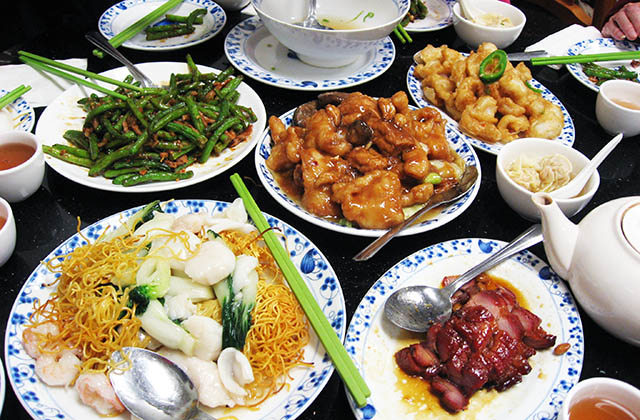
In the central part of China – in Sichuan, Hunnan, and Anhui – mainly green tea is grown. There are a lot of varieties of green tea and most of them appear due to special methods of drying or processing the leaves. From the northern part of China, tea is practically not grown but pressed tea is very popular in these places, especially on the border with Mongolia, in the steppe regions, where meat and fatty foods prevail. In these places, tea is prepared with milk, salt, and fat. There is a version that a similar method emerged from the need to “wash the dishes”. Indeed, after cooking a meat dish in a boiler, the fat is very difficult to peel off, and there is very little water. Thus, everyday necessity has shaped the tea preferences of the whole region.
Chinese cuisine has spawned a large number of small and large Chinese restaurants around the world. Naturally, scammers also took a closer look at this popularity. The characteristic features of improper preparation of traditional Chinese dishes in some supposedly “Chinese” restaurants are too fatty or too bland dishes. Otherwise, Chinese food is delicious and healthy. However, some dishes may be too spicy for the European stomach, so some adaptation period is required before traveling to China. In a Chinese restaurant, it will not be superfluous to clarify the composition of unfamiliar dishes. It is not worth eating at once and eating unfamiliar dishes a lot, even if you like their taste. Mindful of Chinese traditions, eat slowly, enjoying the skill of the chef and unique flavor combinations.


